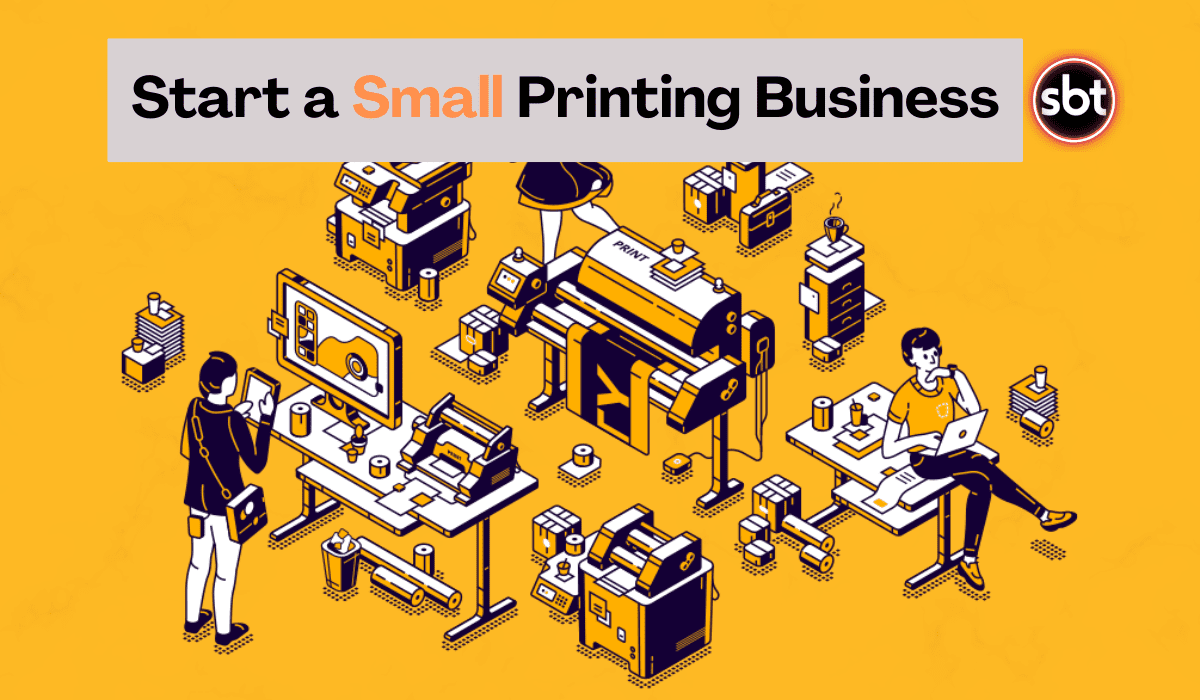Top 10 Steps To Start a Small Printing Business in 2025
Starting a small printing business can be an exciting and profitable venture. With the right approach, you can turn your passion for printing into a successful enterprise. Whether you plan to offer custom apparel, marketing materials, or signage, following a structured process is essential.
This guide will walk you through the top 10 steps to launching your own printing business. From choosing a niche to marketing your services, we’ll cover everything you need to know.
1. Identify Your Niche
Before you start, determine what type of printing business you want to run. The printing industry offers various services, and selecting a specific niche can help you stand out.
For instance, you could specialize in custom apparel printing, producing t-shirts, hoodies, and tote bags. Alternatively, you may focus on marketing materials, such as business cards, flyers, and brochures. Other niches include large-format printing for banners and posters or personalized gifts like mugs and phone cases.
By selecting a niche, you can target the right customers and optimize your business operations. Consider researching your local market to see which printing services are in demand. Identifying a profitable niche will set the foundation for your success.
2. Develop a Business Plan
A well-crafted business plan is essential for any startup. It serves as a roadmap for your business and helps secure funding if needed.
Your plan should include an executive summary, which outlines your business idea, mission, and goals. Next, conduct a market analysis to identify competitors and potential customers. Understanding the demand for printing services in your area will help you refine your offerings.
Include details about your business structure, whether you’ll operate as a sole proprietor, partnership, or LLC. Also, outline your financial projections, estimating startup costs and expected revenue.
A solid business plan not only keeps you on track but also increases your chances of securing loans or investors. Many lenders and grant programs require a clear strategy before offering financial support.
3. Secure Financing
Starting a printing business requires capital for equipment, supplies, and marketing. Understanding your financing options will help you make informed decisions.
If you have savings, you can fund the business yourself. However, many entrepreneurs seek small business loans or grants. The Small Business Administration (SBA) and other organizations offer funding options for new business owners.
Another option is seeking investors or crowdfunding. Platforms like Kickstarter allow you to raise funds from supporters. Additionally, consider leasing equipment instead of buying outright to reduce upfront costs.
Proper financial planning ensures you have enough resources to launch and sustain your business. Make sure to calculate expenses carefully to avoid unexpected financial challenges.
Related | Top 10 Small Business Opportunities in Australia (2025)
4. Obtain Necessary Licenses and Permits
Operating legally requires obtaining the proper licenses and permits. The requirements may vary depending on your location and business type.
You’ll likely need a general business license to operate legally. Additionally, if you sell printed products, a sales tax permit may be required. Some areas also require zoning permits if you plan to run the business from home.
Check with your local government offices or the SBA website to find out which permits apply to your business. Staying compliant with legal requirements helps you avoid penalties and keeps your business running smoothly.
5. Invest in Quality Equipment and Software
Your equipment plays a vital role in delivering high-quality printed products. Investing in reliable printers, cutting machines, and design software is essential.
For apparel printing, consider a heat press or screen-printing machine. If you focus on paper products, invest in laser or inkjet printers that offer high resolution. Vinyl cutters and laminators may also be necessary depending on your niche.
Graphic design software like Adobe Photoshop, Illustrator, or CorelDRAW will help you create professional designs. Choosing the right equipment ensures efficiency and superior results.
6. Set Up Your Workspace
A well-organized workspace improves productivity. Decide whether you’ll operate from home, a commercial location, or an online store.
If working from home, dedicate a space for your equipment and materials. Ensure proper ventilation, especially if using solvent-based inks. A commercial location may be beneficial for attracting walk-in customers.
Organize your space for efficiency by setting up designated areas for printing, cutting, and packaging. Keeping a clean and structured workspace will streamline your operations and improve workflow.
7. Build an Online Presence
In today’s digital age, having an online presence is crucial for business success. Create a professional website showcasing your services, pricing, and portfolio.
Utilize social media platforms like Facebook, Instagram, and LinkedIn to connect with potential customers. Share behind-the-scenes content, customer testimonials, and special promotions to engage your audience.
Consider setting up an e-commerce store on platforms like Etsy or Shopify. An online presence expands your reach and attracts customers beyond your local area.
8. Develop a Marketing Strategy
Marketing is essential to growing your printing business. Implement strategies that effectively reach your target audience.
Start by networking at local business events and offering promotional discounts. Email marketing can help retain customers, while online ads drive new leads. Collaborating with local businesses can also increase referrals.
One effective approach is offering bundle deals or discounts for first-time customers. This encourages people to try your services and return for future orders.
9. Provide Excellent Customer Service
Customer satisfaction is key to long-term success. Providing high-quality products with exceptional service will help you build a loyal customer base.
Ensure clear communication with customers regarding order details and timelines. Offer quick turnaround times and be responsive to inquiries. Handling complaints professionally also strengthens customer relationships.
Encourage reviews and testimonials from satisfied clients. Positive feedback helps attract new customers and establishes trust in your brand.
10. Monitor and Adapt
Running a business requires continuous evaluation. Regularly assess your performance and be open to adapting strategies based on customer feedback and market trends.
Keep track of sales, customer preferences, and operational efficiency. If certain products or services are in high demand, consider expanding those offerings.
Staying updated with new printing technologies and industry trends can give you a competitive edge. By constantly improving, your business will remain relevant and successful.
Final Thoughts
Starting a small printing business requires careful planning and execution. By following these 10 steps, you can establish a strong foundation for success.
Remember, choosing a niche, investing in quality equipment, marketing effectively, and providing excellent service are key elements to building a thriving printing business. With dedication and the right approach, you can turn your passion for printing into a profitable venture!







